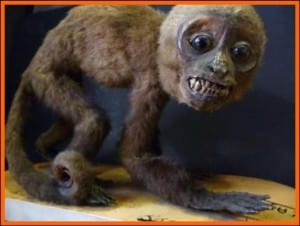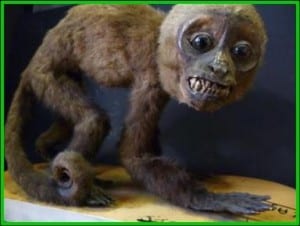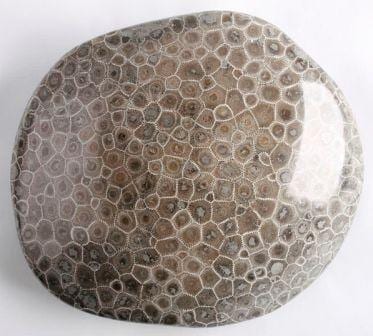Specimen of the week 374: Hypsilophodon foxii cast
By ucwehlc, on 18 January 2019
Stop press! This week we are revisiting an old specimen of the week to bring you breaking dinosaur news.
Don’t worry, we didn’t break it, specimens of the week is…
 Close
Close
News and musings from the UCL Culture team

By ucwehlc, on 18 January 2019
Stop press! This week we are revisiting an old specimen of the week to bring you breaking dinosaur news.
Don’t worry, we didn’t break it, specimens of the week is…
By ucwehlc, on 28 July 2017
The specimen this week might be small, but it’s pretty important in the history of natural history. These two little pieces of fossil bone are from the collection of the early 19th century surgeon and palaeontologist Gideon Mantell. Specimen of the week is…
By ucwehlc, on 28 April 2017
This week we bring you a charming and slightly mad model of an animal that never was. Look, up on the shelf! It’s a bird! It’s a dinosaur! No, specimen of the week is…
By Mark Carnall, on 13 April 2015
 This week’s specimen of the week is another specimen highlighted in our current exhibition Strange Creatures: The Art of Unknown Animals and yet another dinosaur specimen from me. In our exhibition about representing animals through art and science, this specimen is in a case about how understanding of extinct animal biology has changed through the discovery of new fossils and advances in analytical techniques and tools.
This week’s specimen of the week is another specimen highlighted in our current exhibition Strange Creatures: The Art of Unknown Animals and yet another dinosaur specimen from me. In our exhibition about representing animals through art and science, this specimen is in a case about how understanding of extinct animal biology has changed through the discovery of new fossils and advances in analytical techniques and tools.
Today’s specimen is often described as chicken-sized which is one of the go-to standard measurements of animals in popular culture, the full scale goes; mouse-sized, chicken-sized, turkey-sized, terrier-sized, volkswagen-sized then various dimensions expressed in double-decker buses ending with Olympic swimming pools and football pitches. There is a separate system for brain sizes oriented around fruit, nut and sporting ball sizes.
This week’s specimen of the week is… (more…)
By Mark Carnall, on 23 March 2015
 This week’s specimen of the week is an object that is very special to me and one of the objects featured in our current exhibition Strange Creatures: The Art of Unknown Animals. The theme of the exhibition is representations of animals centred around George Stubbs’ painting of a kangaroo, Europe’s first painting of an Australian animal which became the archetype for how people imagined how kangaroos looked, despite the animal itself never being seen by George Stubbs. In addition to this painting the exhibition focuses on representations of animals across modern scientific modelling, medieval manuscripts and, a part of the exhibition that is very close to my heart, representations of dinosaurs in popular culture in the form of toys, comics, video games and film.
This week’s specimen of the week is an object that is very special to me and one of the objects featured in our current exhibition Strange Creatures: The Art of Unknown Animals. The theme of the exhibition is representations of animals centred around George Stubbs’ painting of a kangaroo, Europe’s first painting of an Australian animal which became the archetype for how people imagined how kangaroos looked, despite the animal itself never being seen by George Stubbs. In addition to this painting the exhibition focuses on representations of animals across modern scientific modelling, medieval manuscripts and, a part of the exhibition that is very close to my heart, representations of dinosaurs in popular culture in the form of toys, comics, video games and film.
This week’s object from the exhibition is from my own personal collection, my first ever dinosaur toy which may be surprising to find in a museum but mass produced ephemera can tell us a lot about societies’ interpretation and response to ideas of extinct creatures despite being very far removed from any actual scientific investigation or research.
This week’s specimen of the week is…
By Mark Carnall, on 23 February 2015
A question we get from our visitors a lot at the Grant Museum is “Is it a dinosaur?” either preceded or followed by the question “Is it real?”. There’s something about a natural history museum that despite displaying skeletons of horses, rhinos, frogs, fish, bats, cats, rats, snakes and crocodiles, to many of our younger visitors (but not exclusively) any skeleton in a museum, particularly a big one, has to be a dinosaur (of the non bird variety of course but that’s a blog post for another time). That’s how dinosaurs come, as large skeletons. So unfortunately for us we have to deflate the expectations of our visitors sometimes by informing them that no, sorry, it isn’t a dinosaur it’s ‘just’ an elephant or gorilla or tiger. Animals which are endlessly fascinating and amazing in their own right but not at the precise moment of discovering “oh-its-not-a-dinosaur”.
We don’t have a huge amount of dinosaur material at the Grant Museum – just over one hundred specimens including a lot of plaster casts and our ever popular plastic dinosaur collection. Of the actual fossil material we have in the collection, there’s very little material which brings to mind the awe-inspiring, ground shaking, fearsome dinosaurs we’re used to in popular culture. The reality is (dare I say) a bit more underwhelming, our dinosaur fossil collection comprises fragments of ribs, partial vertebrae and according to one of our database entries a ‘sub angular fossil fragment’. However, we do have one complete (non-avian) dinosaur skeleton on display. One that’s easily missed, tucked above our whale display. So ask me again. Is it a dinosaur? Yes it is! Is it real? Errr no, it’s just a cast (topical) BUT IT’S STILL INTERESTING OKAY.
This week’s specimen of the week is…
By Emma-Louise Nicholls, on 3 October 2013
Do you having any burning desires to have something explained by someone on the inside? This blog series is a How To Guide for the museological musings of a Museum Assistant. This edition will explain in detail…
How To: Be a Bad Zoologist
 Put on your Dr Alan Grant hat and find your best palaeontological hammer and chisel. Go to some remote location rarely visited and poorly studied. Find a perfectly preserved fossil specimen that is a missing link, hugely important to mankind and that will in one rocky lump, answer a million questions that have been burning amongst the scientific community for decades. Dust it off, polish it up, put it on your mantlepiece, and don’t mention it to a soul. Or you could flog it to another private collector, just so long as it never sees the light of day, or the inquisitive eye of an expert. (more…)
Put on your Dr Alan Grant hat and find your best palaeontological hammer and chisel. Go to some remote location rarely visited and poorly studied. Find a perfectly preserved fossil specimen that is a missing link, hugely important to mankind and that will in one rocky lump, answer a million questions that have been burning amongst the scientific community for decades. Dust it off, polish it up, put it on your mantlepiece, and don’t mention it to a soul. Or you could flog it to another private collector, just so long as it never sees the light of day, or the inquisitive eye of an expert. (more…)
By Simon J Jackson, on 10 October 2012
I found this… is a new mini-installation by the entrance to the Museum. In each of the six cabinets one member of our team has selected one object which they have uncovered something new about. Today…
The dinosaur footprint
 As I worked my way through documenting numerous specimens in the stores, I was pleased to come upon this specimen, one of three plaster casts of dinosaur footprints from the Isle of Wight Francis Mussett Collection. Having completed a Ph.D. in dinosaur footprint formation, it was a great opportunity for me to apply my expertise to the specimens. Firstly, by comparing the specimen to other footprints in the literature, and ones I have studied, I was able to ascertain that the animal that made this footprint was probably a flesh eating or carnivorous dinosaur — note the three long slender digits pointing forward with pointed terminations. By using a well-known relationship between footprint length and hip height, I was able to ascertain that the dinosaur would have been approximately 1 m high at the hip, and therefore about 3 to 4 m in length. The web-like structure between two of the toe imprints was probably formed from sediment being squeezed between the toes as the foot impacted upon the sediment. Thus the original ‘mould’ of the foot may have been slightly modified by the movement of the sediment, which means our interpretation of the animal’s size and type needs to be treated with some caution.
As I worked my way through documenting numerous specimens in the stores, I was pleased to come upon this specimen, one of three plaster casts of dinosaur footprints from the Isle of Wight Francis Mussett Collection. Having completed a Ph.D. in dinosaur footprint formation, it was a great opportunity for me to apply my expertise to the specimens. Firstly, by comparing the specimen to other footprints in the literature, and ones I have studied, I was able to ascertain that the animal that made this footprint was probably a flesh eating or carnivorous dinosaur — note the three long slender digits pointing forward with pointed terminations. By using a well-known relationship between footprint length and hip height, I was able to ascertain that the dinosaur would have been approximately 1 m high at the hip, and therefore about 3 to 4 m in length. The web-like structure between two of the toe imprints was probably formed from sediment being squeezed between the toes as the foot impacted upon the sediment. Thus the original ‘mould’ of the foot may have been slightly modified by the movement of the sediment, which means our interpretation of the animal’s size and type needs to be treated with some caution.